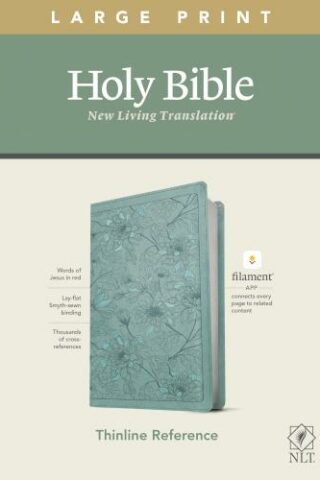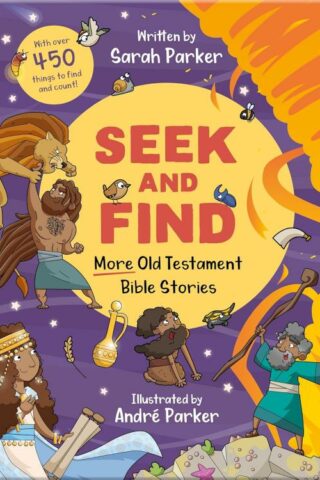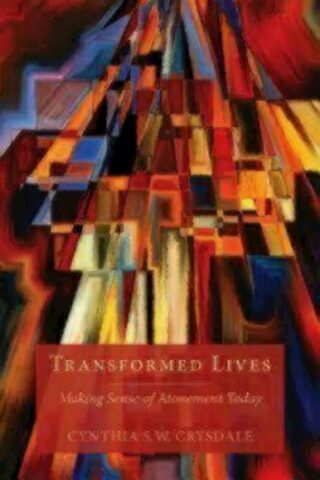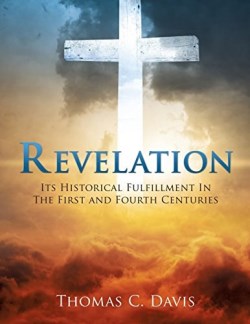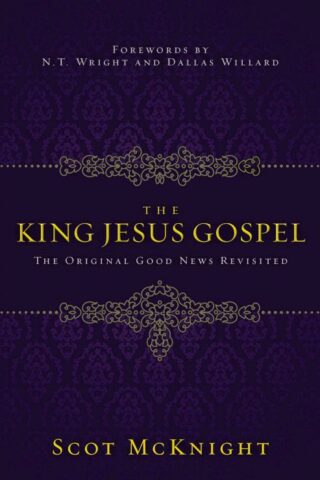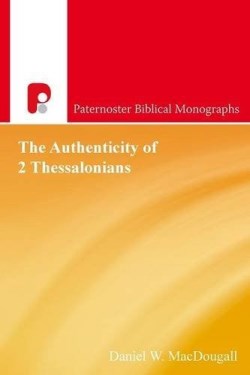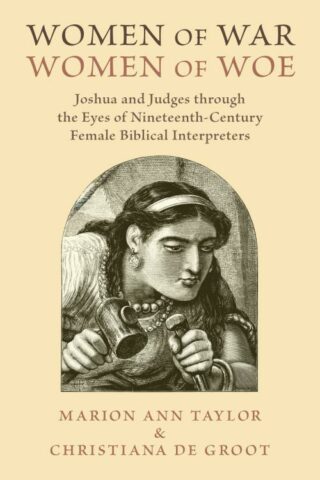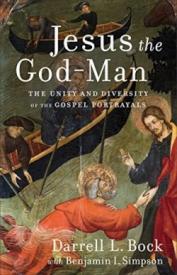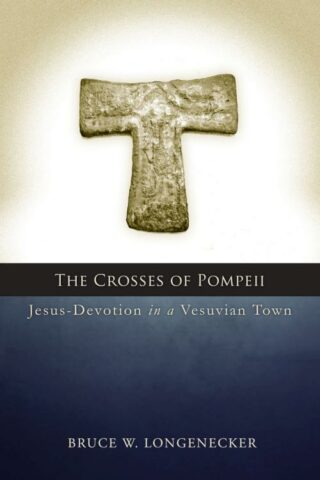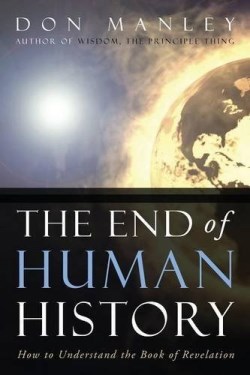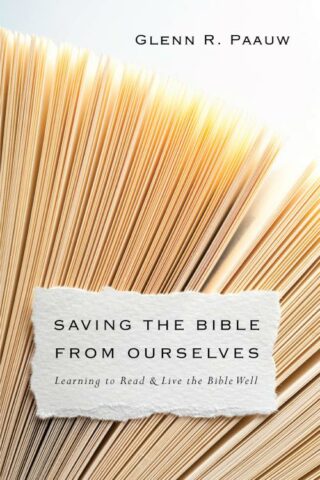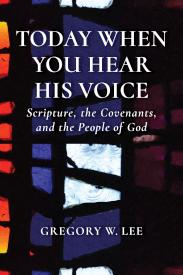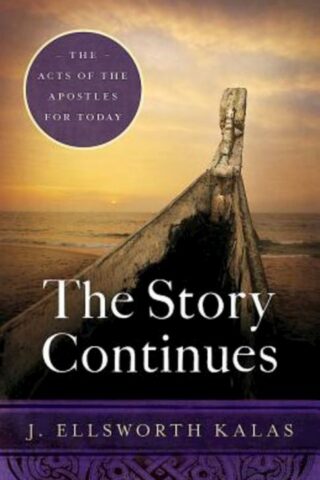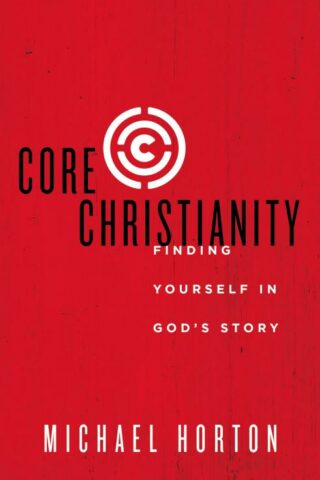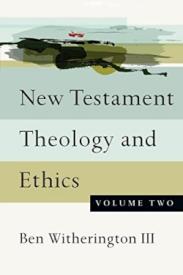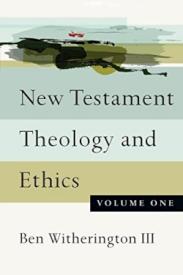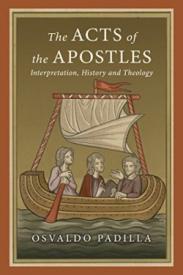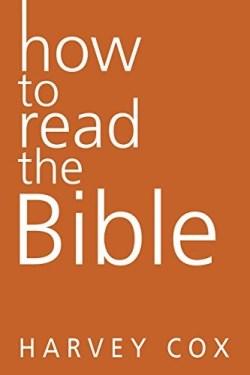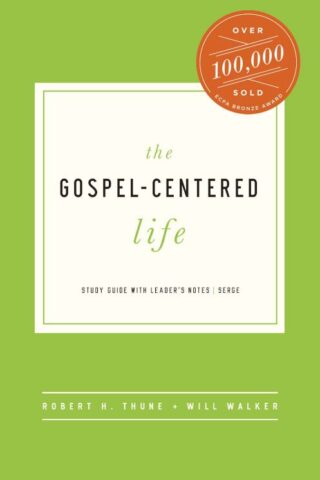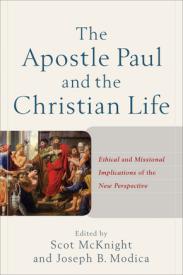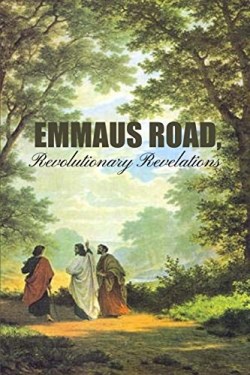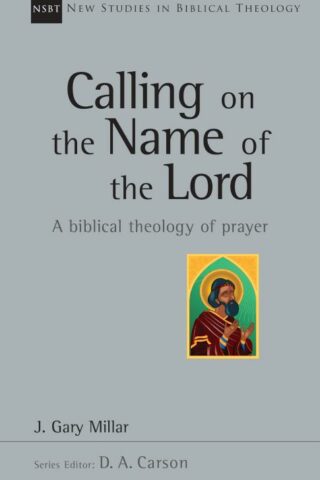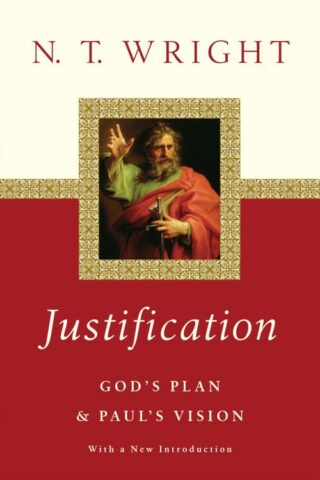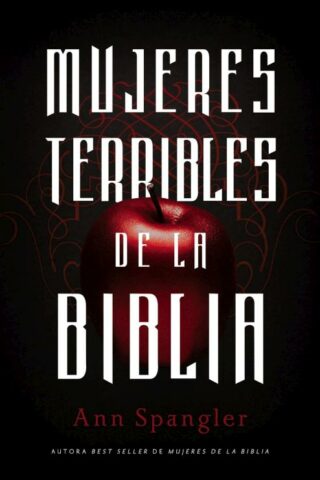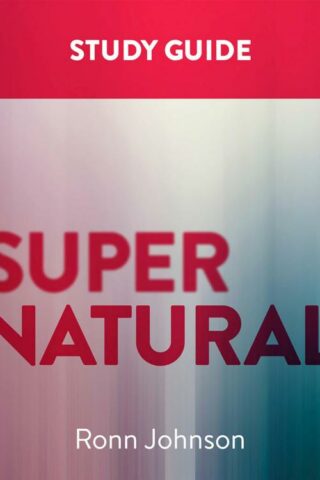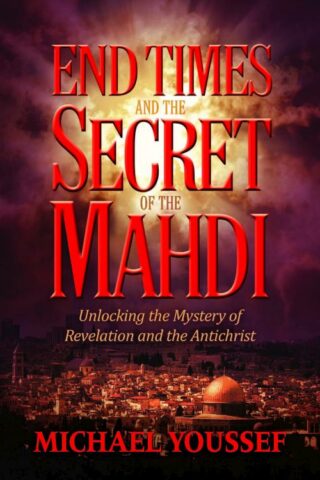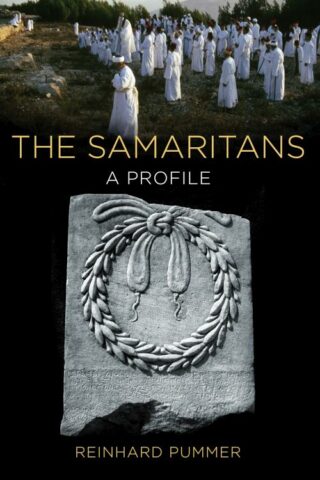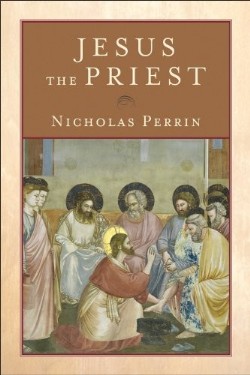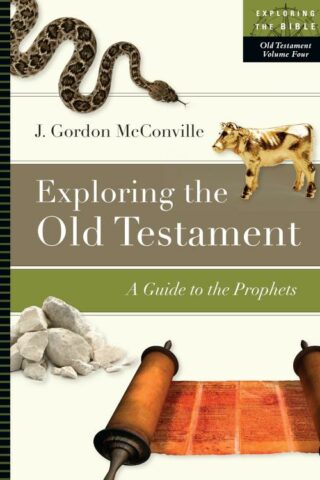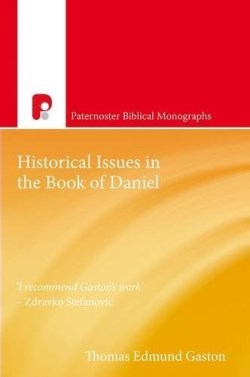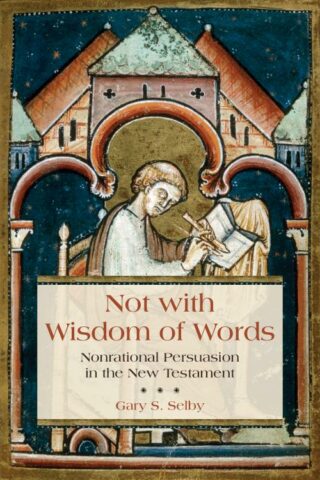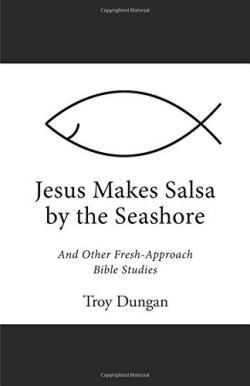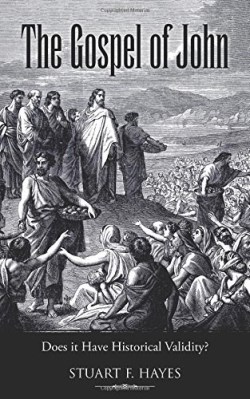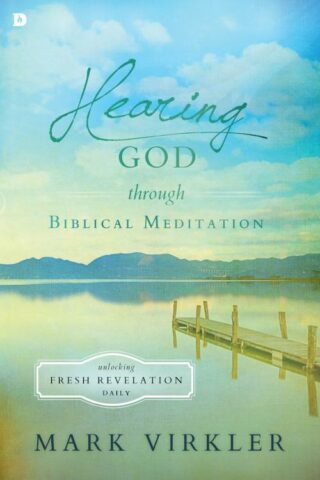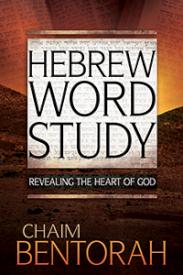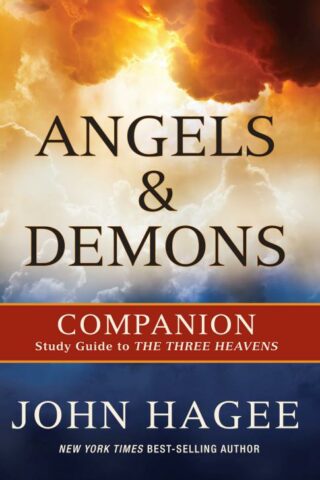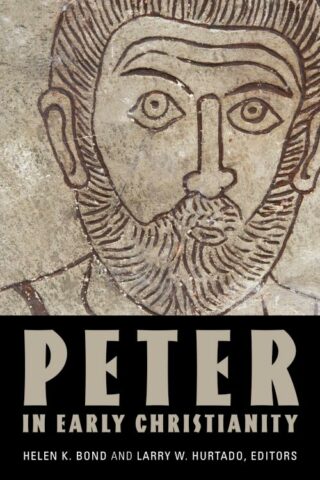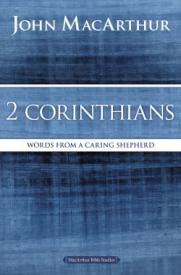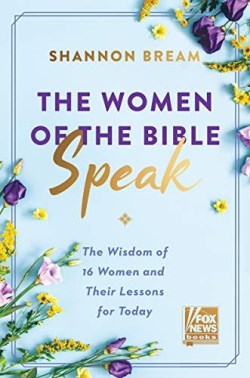Biblical Studies
Showing 751–800 of 2138 resultsSorted by latest
-
His Love Endures Forever
$22.50God is love-there are few more quoted statements from all of Scripture. Although wonderfully simple, the idea that God is fundamentally loving is incredibly profound. And yet, sometimes we confuse God’s love with our human understanding of love-an understanding that is inherently imperfect, sometimes self-serving, and often fickle. Helping us walk in the belief that God is love-not that love is God-this book explores what the Bible actually teaches about how and what God loves. Readers will discover that, although we often misunderstand, misuse, and take for granted God’s love, it’s actually more wonderful, pure, and satisfying than we ever imagined.
Add to cartin stock within 3-5 days of online purchase
-
Transformed Lives : Making Sense Of Atonement Today
$33.26Even theologians have had different ideas about the theology of atonement; how are the rest of supposed to understand it? This book is a good place to start.Crysdale, whose background in both psychology and theology gives her a unique perspective, presents an overview of the history of the theology of atonement, addressing clearly the difficulties around this concept, and bringing us with her to a contemporary understanding.The book is written in everyday language and concludes with an appendix: “Case Studies in Transformation: A Series of Stories of People Whose Lives Have Been Transformed Through Life in Christ and Christ’s Community of Beloveds.”
Add to cartin stock within 3-5 days of online purchase
-
Revelation : Is Historical Fulfillment In The First And Fourth Cenuries
$34.98The Revelation message is powerful and understandable when viewed through past historical events. This in-depth, easy-to-read book will cause you to reexamine your traditional beliefs about Revelation’s message to the church.
Add to cartin stock within 3-5 days of online purchase
-
King Jesus Gospel
$16.99Contemporary evangelicals have built a “salvation culture” but not a “gospel culture.” Evangelicals have reduced the gospel to the message of personal salvation. This book makes a plea for us to recover the old gospel as that which is still new and still fresh. The book stands on four arguments: that the gospel is defined by the apostles in 1 Corinthians 15 as the completion of the Story of Israel in the saving Story of Jesus; that the gospel is found in the Four Gospels; that the gospel was preached by Jesus; and that the sermons in the Book of Acts are the best example of gospeling in the New Testament. The King Jesus Gospel ends with practical suggestions about evangelism and about building a gospel culture.
Add to cartin stock within 3-5 days of online purchase
-
Authenticity Of 2 Thessalonians
$49.99This is a clear and well-argued work for the authenticity of 2 Thessalonians. Following a critical examination of the history of the dispute, the author examines the life and epistle of the earliest external witness, Polycarp, to show that 2 Thessalonians was accepted as authentically Pauline about AD 90. Through a careful reading of the letter MacDougall demonstrates that ‘tradition’ (2 Thess. 2:15; 3:6) is a characteristic of the undisputed letters of Paul, that the doctrinal content – eschatology and imitation – is Pauline, and that the letter’s style is authentic. A rigorous defence of the letter is long overdue. MacDougall provides a seminal work on the subject.
Add to cartin stock within 3-5 days of online purchase
-
Old Testament Theology 3
$60.99In this third volume of his critically acclaimed Old Testament Theology John Goldingay explores the Old Testament vision of Israel’s life before God. The first volume focused on the story of God’s dealings with Israel, or Israel’s gospel. The second volume investigated the beliefs of Israel, or Israel’s faith. Now the spotlight falls on the Old Testament’s perspective on the life that Israel should live in its present and future, including its worship, prayer and spirituality, as well as its practices, attitudes and ethics before God. Goldingay sees three spheres of life giving order to Israel’s vision: its life in relation to God, its life in community and the life of the individual as a self. Within these frameworks he unfurls a tapesetry that is as broad and colorful as all of life, and yet detailed in its intricate attention to the text. With this final volume John Goldingay has given us the third pillar of an Old Testament theology that is monumental in scope and yet invites us to enter through multiple doors to explore its riches. Students will profit from a semester in its courts, and ministers of the Word will find their preaching and teaching deeply enriched by wandering its halls and meditating in its chambers.
Add to cartin stock within 3-5 days of online purchase
-
Old Testament Theology 2
$60.99Old Testament Theology: Israel’s Faith is the second of John Goldingay’s magisterial three-volume Old Testament Theology. The award-winning first volume, Old Testament Theology: Israel’s Gospel, followed the story line of the First Testament, developing its narrative theology. This volume finds its point of departure in the Prophets, Psalms and Wisdom literature, where we encounter a more discursive thinking that is closer to traditional theology. Whereas the first volume followed the epochal divine acts of Israel’s “gospel” narrative, here Goldingay sets out the faith of Israel under the major rubrics of God Israel The Nightmare The Vision The World The Nations Humanity In a style that cleaves closely to the text, Goldingay offers up a masterful exposition of the faith of the First Testament, one born of living long with the text and the refined skill of asking interesting questions and listening with trained attention. Never one to sacrifice a close hearing of a text for an easy generality, or to mute a discordant note for the sake of reassuring harmony, Goldingay gives us an Old Testament theology shot through with the edge-of-the-seat vitality of discovery. The first volume ofOld Testament Theology has triggered lively discussion in the academy. This volume too will be welcomed and discussed by scholars. But its fresh presentations of theological motifs, as well as its engagement with contemporary contexts, will also greatly enrich the treasury of insights this series makes available to preachers and communicators of the Old Testament.
Add to cartin stock within 3-5 days of online purchase
-
Women Of War Women Of Woe
$38.99This volume gathers the writings of thirty-five nineteenth-century women on the stories of women in Joshua and Judges. Recovering and analyzing neglected works by Elizabeth Cady Stanton, Harriet Beecher Stowe, and many others, Women of War, Women of Woe illuminates the biblical text, recovers a neglected chapter of reception history, and helps us understand and apply Scripture in our present context.
The stories of Rahab, Deborah, Jael, Delilah, Manoah’s wife, Achsah, Jephthah’s daughter, and the Levite’s concubine raised thorny questions for these female biblical interpreters – questions that they addressed candidly in their writings. Could a Victorian woman use her intelligence to negotiate like Rahab? Was the seemingly well-educated Deborah an appropriate role model? Or did Jephthah’s daughter more correctly model a pious woman’s life as she submitted to her father’s vow? The voices collected in this book offer thoughtful reflection on and responses to these questions and more.
Add to cartin stock within 3-5 days of online purchase
-
Jesus The God Man
$31.76What the Gospels Tell Us about Who Jesus Is
This clear, compact introduction surveys what the Gospels tell us about who Jesus is by exploring his teachings and actions in their contexts. Darrell Bock, a leading evangelical New Testament scholar who speaks and teaches around the world, and Benjamin Simpson treat the Gospels as reliable sources for a plausible portrait of Jesus. Condensing years of extensive study on the topic, this handy, readable textbook presents fresh ways to understand the Gospels, especially the Synoptics in comparison with John.Add to cartin stock within 3-5 days of online purchase
-
Encountering The Bible
$25.99This book aims to equip those who want to finding ways of making the Bible more useful for today’s Church and to help them explore the difficulties of trying to use an ancient text as a guide for contemporary faith.
Add to cartin stock within 3-5 days of online purchase
-
End Of Human History
$19.95Do you ever wonder where on earth this world is heading? Do you have a fuzzy idea that the future is all spelled out in the book of Revelation in the Bible, but you think it’s too complicated to understand? If you, like so many others, are asking, “What is happening in our world? Why is there so much pain and trouble? Are these the things spoken of in the book of Revelation?”-you will find the answers in this book! Don Manley has given us a commentary on the book of Revelation that is “user-friendly” and easy to understand. The author shows how recent world events coincide with the nearly two thousand-year-old prophecies found in the book of Revelation. The book also includes charts that illustrate the various ages of human history and will enhance your understanding of events of today and those of the future.
Add to cartin stock within 3-5 days of online purchase
-
Saving The Bible From Ourselves
$24.99Does the Bible need to be saved? Over the course of the centuries, Bible scholars and publishers have increasingly added “helps” chapter divisions, verses, subheads, notes to the Bible in an effort to make it easier to study and understand. In the process, however, these have led to sampling Scripture rather than reading deeply. According to author Glenn R. Paauw, the text has become divorced from the Bible’s literary and historical context, leading to misinterpretation and a “narrow, individualistic and escapist view of salvation.” Rather than being a culture-shaping force, the Bible has become a database of quick and easy answers to life’s troubling questions. But these deficiencies can be corrected by engaging in what the author calls “big readings.” In these pages Paauw introduces us to seven new (to us) understandings of the Bible as steps on the path to recovering one deeply engaged Bible. With each “new” Bible presented, deficiencies in how we currently interact with the Bible are explored, followed by recommendations for a new practice. The Bible’s transformative power is recovered when we remove the chains Christians have applied to it over the centuries. The Bible does not need to be saved because of any defect in itself, but because we have distorted and misread it.Saving the Bible from Ourselves provides students of the Bible a new paradigm for reading and living the Bible well.”
Add to cartin stock within 3-5 days of online purchase
-
Today When You Hear His Voice
$33.99Presents a doctrine of Scripture based on Hebrews in dialogue with Augustine and Calvin
What vision of biblical authority arises from Scripture’s own use of Scripture? This question has received surprisingly little attention from theologians seeking to develop a comprehensive doctrine of Scripture. Today When You Hear His Voice by Gregory W. Lee fills this gap by listening carefully to the Epistle to the Hebrews.
Lee illuminates the unique way that Hebrews appropriates Old Testament texts as he considers the theological relationship between salvation history and scriptural interpretation. He illustrates these dynamics through extended treatments of Augustine and Calvin, whose contrasting perspectives on the covenants, Israel, and the literal and figural senses provide theological categories for appreciating how Hebrews innovatively presents Scripture as God’s direct address in the contemporary moment.
Add to cartin stock within 3-5 days of online purchase
-
Offering Of The Gentiles
$38.99Money mattered to the apostle Paul. One economic endeavor of signal importance for Paul was the monetary fund that he organized among the largely Gentile congregations of his mission for the Jewish-Christian community in Jerusalem.David J. Downs investigates this offering from a variety of angles. He begins with an attempt to piece together a relative chronological account, based primarily on information from Paul’s epistles, of the apostle’s fundraising efforts on behalf of the Jerusalem church. After reconstructing this complex story, Downs examines the socio-cultural context of the collection, focusing on analogous forms of giving among ancient pagan and Jewish voluntary associations, including practices of benefaction, common funds, care for the poor, and translocal economic links among these associations. With this chronological and socio-cultural context in mind, the author then explores Paul’s use of several cultic metaphors to frame the contribution as a religious offering consecrated to God. Drawing on recent work in the field of metaphor theory, Downs contends that Paul metaphorically frames his readers’ responsive participation in the collection as an act of cultic worship, thus underscoring the point that the fulfillment of mutual obligations within the community of believers results in praise, not human benefactors, but to God, the one from whom all benefactions come. This rhetorical strategy suggests that even the very human action of raising money for those in material need originates in the grace ( charis ) of God and will eventuate in thanksgiving ( charis ) to God (2 Cor 9:14-15).
Add to cartin stock within 3-5 days of online purchase
-
Believers Bible Commentary
$59.99Make Bible study a part of your daily life with the thorough, yet easy-to-use, Believer’s Bible Commentary. William MacDonald tackles the controversial issues head-on, taking a theologically conservative stand, yet presenting alternate views with fairness. The Believer’s Bible Commentary is a friendly guide to exploring the deeper meanings of every biblical book. This new edition includes 14 pages of 4-color maps of the Holy Land and other study helps.
Features:
*Nelson’s best-selling Bible commentary
*Balanced approach to linguistic studies and useful application
*Easy to understand
*14 pages of 4-color maps
*Use with any Bible translation
*Best used with the New King James version of the Bible. The New King James keeps the style and accuracy of the King James but has up-to-date English.Add to cartin stock within 3-5 days of online purchase
-
When The Church Was Very Young (Student/Study Guide)
$17.99Once upon a time, roughly 20 centuries ago, there were some very special people on our planet. There weren’t many of them, and at first glance they didn’t seem very special. In truth, even at a second or third glance they weren’t overly impressive. But today the whole world knows what they did and recognizes the cross that was their symbol. Kalas takes readers into the world of the apostles and places contemporary challenges into context. This book contains a discussion guide.
Add to cartin stock within 3-5 days of online purchase
-
Core Christianity : Finding Yourself In Gods Story
$22.99What Do All Christians Believe? For many people, words like doctrine and theology cause their eyes to glaze over, or they find them difficult to understand and struggle to see how they are relevant to daily life. But theology is far from boring; it is the study of God and should lead to awe and wonder as we better understand who God is and what he has done for us. In Core Christianity, author, pastor, and theologian Mike Horton tackles the essential and basic beliefs that all Christians share. What is core to the Christian faith? In addition to unpacking these beliefs in a way that is easy to understand, Horton shows why they matter to our lives today. This introduction to the basic doctrines of Christianity is a helpful guide by a respected theologian and a popular author, and it includes discussion questions for individual or group use. Core Christianity is perfect for those who are new to the faith, as well as those who have an interest in deepening in their understanding of what it means to be a follower of Jesus Christ.
Add to cartin stock within 3-5 days of online purchase
-
New Testament Theology And Ethics 2
$44.99All too often, argues Ben Witherington, the theology of the New Testament has been divorced from its ethics, leaving as isolated abstractions what are fully integrated, dynamic elements within the New Testament itself. As Witherington stresses, “behavior affects and reinforces or undoes belief.” In this paperback edition of The Indelible Image, Volume 2, Witherington offers the second of a two-volume set on the theological and ethical thought world of the New Testament. The first volume looks at the individual witnesses, while the second examines the collective witness. The New Testament, says Ben Witherington, is “like a smallish choir. All are singing the same cantata, but each has an individual voice and is singing its own parts and notes. If we fail to pay attention to all the voices in the choir, we do not get the entire effect. . . . If this first volume is about closely analyzing the sheet music left to us by which each musician’s part is delineated, the second volume will attempt to re-create what it might have sounded like had they ever gotten together and performed their scores to produce a single masterful cantata.” What the New Testament authors have in mind, Witherington contends, is that all believers should be conformed in thought, word and deed to the image of Jesus Christ-the indelible image.
Add to cartin stock within 3-5 days of online purchase
-
Discovering Genesis : Content Interpretation Reception
$25.99Concise, student-friendly introduction to Genesis
Iain Provan here offers readers a compact, up-to-date, and student-friendly introduction to the book of Genesis, focusing on its structure, content, theological concerns, key interpretive debates, and historical reception.
Drawing on a range of methodological approaches (author-, text-, and reader-centered) as complementary rather than mutually exclusive ways of understanding, Discovering Genesis encourages students to dig deeply into the theological and historical questions raised by the text. It provides a critical assessment of key interpreters and interpretive debates, focusing especially on the reception history of the biblical text, a subject of growing interest to students and scholars of the Bible.
Add to cartin stock within 3-5 days of online purchase
-
Gospel Of John
$11.75This Gospel of John gives friends of Amish and Mennonites a way to share the wonderful truth of salvation by grace. It will open the door for further discussion and friendship between those who care and the plain people living among them. The cost of this book is kept as low as possible to provide as many copies as needed.
Parallel versions include the Luther Bibel 1545, Pennsylvania Dutch, and King James Version. The fourth column contains notes from the perspective of former Amish and Mennonite individuals to help readers think about what they’re reading. Amish and Mennonite readers are invited to read and study God’s Word for themselves and add their own notes. A theological glossary includes words plain readers may not understand. Appendices written by former Amish explain salvation through Christ alone.
Add to cartin stock within 3-5 days of online purchase
-
New Testament Theology And Ethics 1
$44.99All too often, argues Ben Witherington, the theology of the New Testament has been divorced from its ethics, leaving as isolated abstractions what are fully integrated, dynamic elements within the New Testament itself. As Witherington stresses, “behavior affects and reinforces or undoes belief.” In this paperback edition of The Indelible Image, Volume 1, Witherington offers the first of a two-volume set on the theological and ethical thought world of the New Testament. The first volume looks at the individual witnesses, while the second examines the collective witness. The New Testament, says Ben Witherington, is “like a smallish choir. All are singing the same cantata, but each has an individual voice and is singing its own parts and notes. If we fail to pay attention to all the voices in the choir, we do not get the entire effect. . . . If this first volume is about closely analyzing the sheet music left to us by which each musician’s part is delineated, the second volume will attempt to re-create what it might have sounded like had they ever gotten together and performed their scores to produce a single masterful cantata.” What the New Testament authors have in mind, Witherington contends, is that all believers should be conformed in thought, word and deed to the image of Jesus Christ-the indelible image.
Add to cartin stock within 3-5 days of online purchase
-
Acts Of The Apostles
$30.99Acknowledgments
Introduction
Abbreviations1. Who Wrote Acts?
Who Was Luke?
How Important Is The Identity Of The Author To Interpret Acts?
Conclusion2. The Genre Of Acts
A Brief History Of Genre Theory
Proposals On The Genre Of Acts
Conclusion-Acts As Historical Monograph: How Does It Help?3. How Luke Writes History
Luke The Theological Historian
Luke The Storyteller
Luke The Historian
Conclusion4. The Speeches In Acts (Part One): The Speeches In Their Ancient Context
The Reporting Of Speeches In Ancient History
Luke As A Conservative Reporter Of Speeches
Conclusion: Believing The Speeches5. The Speeches (Part Two): The Theology Of The Speeches
The Speech Of Peter At Pentecost (Acts 2:1-41)
The Speech Of Stephen (Acts 7:1-53)
The Speech At The Home Of Cornelius (Acts 10:34-48)
The Speech At Athens (Acts 17:16-31)
The Speech Before Agrippa (Acts 26:1-32)
Summary And Conclusions6. The Justification Of Truth-Claims In Acts: A Conversation With Postliberalism
Postliberalism: A Sketch
Postliberalism And The Question Of Truth-Claims
The Justification Of Truth-Claims In Acts
ConclusionsBibliography
Author Index
Subject Index
Scripture IndexAdditional Info
The book of Acts is a remarkable fusion of the historical and theological, and its account of the early church has fascinated theologians and biblical scholars for centuries. Just who was the author of this work? And what kind of book did he write? How do we classify its genre? The Acts of the Apostles provides an advanced introduction to the study of Acts, covering important questions about authorship, genre, history and theology. Osvaldo Padilla explores fresh avenues of understanding by examining the text in light of the most recent research on the book of Acts itself, philosophical hermeneutics, genre theory and historiography. In addition, Padilla opens a conversation between the text of Acts and postliberal theology, seeking a fully-orbed engagement with Acts that is equally attuned to questions of interpretation, history and theology.Add to cartin stock within 3-5 days of online purchase
-
Lost Letters Of Pergamum (Reprinted)
$23.99A Fascinating Glimpse into the World of the New Testament
Transported two thousand years into the past, readers are introduced to Antipas, a Roman civic leader who has encountered the writings of the biblical author Luke. Luke’s history sparks Antipas’s interest, and they begin corresponding. While the account is fictional, the author is a highly respected New Testament scholar who weaves reliable historical information into a fascinating story, offering a fresh, engaging, and creative way to learn about the New Testament world. The first edition has been widely used in the classroom (over 30,000 copies sold). This updated edition, now with improved readability and narrative flow, will bring the social and political world of Jesus and his first followers to life for many more students of the Bible.Add to cartin stock within 3-5 days of online purchase
-
How To Read The Bible
$18.99Renowned religion expert and Harvard Divinity School professor Harvey Cox deepens our experience of the Bible, revealing the three primary ways we read it, why each is important, and how we can integrate these approaches for a richer understanding and appreciation of key texts throughout the Old and New Testaments.
The Bible is the heart of devotional practice, a source of guidance and inspiration rich with insightful life lessons. On the other side of the spectrum, academics have studied the Bible using scientific analysis to examine its historical significance and meaning. The gap between these readings has resulted in a schism with far-reaching implications: Without historical context, ordinary people are left to interpret the Bible literally, while academic readings overlook the deeply personal connections established in church pews, choir benches, and backyard study groups.
In How To Read the Bible, Cox explores three different lenses commonly used to bring the Bible into focus:
Literary-as narrative stories of family conflict, stirring heroism, and moral dilemmas;
History-as classic texts with academic and theological applications;
Activism-as a source of dialogue and engagement to be shared and applied to our lives.
By bringing these together, Cox shows the Bible in all its rich diversity and meaning and offers us a contemporary activist version that wrestles with issues of feminism, war, homosexuality, and race. The result is a living resource that is perpetually evolving as our understanding changes and deepens from generation to generation.Add to cartin stock within 3-5 days of online purchase
-
Gospel Centered Life Study Guide With Leaders Notes (Teacher’s Guide)
$16.99This best-selling, nine-lesson small group study helps participants understand how the gospel shapes every aspect of life. Each lesson is self-contained, featuring clear teaching from Scripture, and requires no extra work outside of the group setting.
Add to cartin stock within 3-5 days of online purchase
-
Apostle Paul And The Christian Life
$38.75The “new perspective” on Paul, an approach that seeks to reinterpret the apostle Paul and his letters against the backdrop of first-century Judaism, has been criticized by some as not having value for ordinary Christians living ordinary lives. In this volume, world-renowned scholars explore the implications of the new perspective on Paul for the Christian life and church. James D. G. Dunn, N. T. Wright, Bruce Longenecker, Scot McKnight, and other leading New Testament scholars offer a response to this question: How does the apostle Paul understand the Christian life? The book makes a fresh contribution to the new perspective on Paul conversation and offers important new insights into the orientation of the Christian life.
Add to cartin stock within 3-5 days of online purchase
-
Emmaus Road : Revolutionary Revelations
$11.00Recall the journey Jesus took with the two disciples shortly after His resurrection. Ever wondered which Scriptures He shared as they journeyed together? Herein is only one set, which can show how awesome Jesus’ selections were.
This book uncovers facets of Scripture: doctrine, prophecy, and inspiration of Scripture.
Reading this book with understanding helps to:
Know that our Holy Bible is the Word of God
See what is generally meant by the phrase, Kingdom of God
Understand how prophecy is without predestination
Understand why Scripture is filled with allegories and symbolism
See a detailed account of the beginnings of Christianity
See a detailed account of the Trinity
Add to cartin stock within 3-5 days of online purchase
-
Calling On The Name Of The Lord
$28.99Series Preface
Author’s Preface
Abbreviations
Introduction: Prayer And The Gospel
1. The Day Prayer Began: Prayer In The Pentateuch
2. Big Prayers And The Movements Of History: Prayer In The Former Prophets
3. Praying In The Light Of The Future: Prayer And The Latter Prophets
4. Praying For A New Covenant: Prayer In The Writings
5. The Psalms, The Messiah And The Church
6. Jesus And Prayer: Prayer In The Gospels
7. The Church At Prayer: Prayer In The Book Of Acts
8. Church Planting And Prayer: Prayer In Paul’s Letters
9. The End Of Prayer: Prayer In The Later New Testament
Afterword: Why This Matters- (re)learning To Pray Big Prayers
Bibliography
Index Of Authors
Index Of Scripture ReferencesAdditional Info
“At that time people began to call upon the name of the LORD” (Genesis 4:26 ESV). From this first mention of prayer in the Bible, right through to the end, when the church prays “Come, Lord Jesus!” (Revelation 22:20), prayer is intimately linked with the gospel?God’s promised and provided solution to the problem of human rebellion against him and its consequences. After defining prayer simply as “calling on the name of the Lord,” Gary Millar follows the contours of the Bible’s teaching on prayer. His conviction is that even careful readers can often overlook significant material because it is deeply embedded in narrative or poetic passages where the main emphases lie elsewhere. Millar’s initial focus is on how “calling on the name of the Lord” to deliver on his covenantal promises is the foundation for all that the Old Testament says about prayer. Moving to the New Testament, he shows how this is redefined by Jesus himself, and how, after his death and resurrection, the apostles understood “praying in the name of Jesus” to be the equivalent new covenant expression. Throughout the Bible, prayer is to be primarily understood as asking God to deliver on what he has already promised?as Calvin expressed it, “through the gospel our hearts are trained to call on God’s name” (Institutes 3.20.1). This New Studies in Biblical Theology volume concludes his valuable study with an afterword offering pointers to application to the life of the church today. Addressing key issues in biblical theology, the works comprising New Studies in Biblical Theology are creative attempts to help Christians better understand their Bibles. The NSBT series is edited by D. A. Carson, aiming to simultaneously instruct and to edify, to interact with current scholarship and to point the way ahead.Add to cartin stock within 3-5 days of online purchase
-
Justification : Gods Plan And Pauls Vision
$32.99Few issues are more central to the Christian faith than the nature, scope and means of salvation. Many have thought it to be largely a transaction that gets one to heaven. In this riveting book, N. T. Wright explains that God’s salvation is radically more than this. At the heart of much vigorous debate on this topic is the term the apostle Paul uses in several of his letters to describe what happens to those in Christ-justification. Paul uses this dramatic image from the law court to declare that Christians are acquitted of the cosmic accusations against them. But justification goes beyond this in Paul’s writings to offer a vision of God’s future for the whole world as well as for his people. Here in one place Wright now offers a comprehensive account and defense of his perspective on this crucial doctrine. He provides a sweeping overview of the central points in the debate before launching into a thorough explanation of the key texts in Paul’s writings. While fully cognizant of tradition and controversy, the final authority for his conclusions is the letters of Paul themselves. Along the way Wright responds to critics, such as John Piper, who have challenged what has come to be called the New Perspective. For Wright, what Paul means by justification is nothing less than God’s unswerving commitment to the covenant promise he made to bless the whole world through Abraham and his family. This irenic response is an important contribution for those on both sides of the debate-and those still in between-to consider. Whether you’re a fan of Wright’s work or have read his critics and would like to know the other side of the story, here is a chance to interact with Wright’s views on the issues at stake and form your own conclusions.
Add to cartin stock within 3-5 days of online purchase
-
Mujeres Malas De La Biblia – (Spanish)
$14.99Ann Spangler y Jean E. Syswerda ayudaron a iniciar la locura de “mujeres de la Biblia” con su exitoso libro sobre el tema. Ahora Ann profundiza, creyendo que los lectores estan listos para algo mas que un breve relato de historias. Llevandolos a la vida con gran detalle, destaca muchas de las mujeres mas malvadas de la Biblia, asi como algunas mujeres Abuenas-malasA. A diferencia de Mujeres malas de la Biblia de Lizz Curtis, que transporta a las mujeres en un entorno moderno, Mujeres malas de la Biblia sigue de cerca el texto biblico, cuenta nuevamente sus historias de una manera que sera de interes para los lectores de hoy que quieren entender el contexto historico y cultural. Al final de cada historia, Ann ofrece un breve estudio de la Biblia y una pequena seccion que pinta el trasfondo historico y cultural. Mujeres malas de la Biblia ofrece un nuevo enfoque a cualquier hombre o mujer que disfruta leer historias entretenidas que ofrecen una vision mas profunda de la Biblia. A medida que los lectores profundizan en las historias de las mujeres mas escandalosas de la Biblia, ellos empezaran a entender no solo por que sus historias aparecen en la Biblia, sino tambien como pueden brindar conocimiento valioso sobre nuestras propias vidas.
Add to cartin stock within 3-5 days of online purchase
-
Woman The Hour And The Garden
$18.99Was Jesus ever married? Yes, indeed, says Addison Hodges Hart – but not in the way that recent sensationalist writers have claimed. In this book Hart opens an illuminating window into John’s Gospel as he explores its rich, poetic imagery, particularly the metaphorical significance of “the Woman.”
Inspired by the writings of early church fathers and medieval theologians, Hart presents the Gospel of John as an incarnational, sacramental text and shows that it is primarily a revelation of salvation, deeply mystical and intended to lead its readers into a living relationship with the one who is the Bridegroom of his people.
Add to cartin stock within 3-5 days of online purchase
-
Supernatural A Study Guide
$10.99In Supernatural: What the Bible Teaches About the Unseen World-and Why it Matters, Michael S. Heiser uses his expertise and fifteen years of research to tackle questions about what the Bible really says about the unseen world.
Ronn Johnson’s Supernatural: A Study Guide will help you further explore the ancient worldview of the Bible. Johnson walks through main themes and big picture ideas from Supernatural, while connecting each with practical applications. Reflection questions at the end of each chapter are designed for individual study or discussion with a small group.
Add to cartin stock within 3-5 days of online purchase
-
End Times And The Secret Of The Mahdi
$21.99The emergence of Radical Islamists should be no surprise to students of Scripture. America is only now understanding their intense passion to rule, not only the Middle East, but the western world as well. Youssef points to passages that show us how biblical prophecy speaks to the awful things to come. Beware of the secret of the Mahdi!
Add to cartin stock within 3-5 days of online purchase
-
Samaritans : A Profile
$34.50Most people associate the term “Samaritan” exclusively with the New Testament stories about the Good Samaritan and the Samaritan woman at Jacob’s well. Very few are aware that a small community of about 750 Samaritans still lives today in Palestine and Israel; they view themselves as the true Israelites, having resided in their birthplace for thousands of years and preserving unchanged the revelation given to Moses in the Torah.
Reinhard Pummer, one of the world’s foremost experts on Samaritanism, offers in this book a comprehensive introduction to the people identified as Samaritans in both biblical and nonbiblical sources. Besides analyzing the literary, epigraphic, and archaeological sources, he examines the Samaritans’ history, their geographical distribution, their version of the Pentateuch, their rituals and customs, and their situation today. There is no better book available on the subject.
Add to cartin stock within 3-5 days of online purchase
-
Jesus The Priest
$42.35Following his critically acclaimed book Jesus the Temple, Nicholas Perrin here offers an insightful theological contribution to Jesus studies that synthesizes the best in traditional/conservative and liberal reconstructions of Jesus’s life and teaching. Some view Jesus as an eschatological prophet (conservative tradition) while others view him as a teacher of wisdom (liberal tradition). Perrin identifies the priesthood of Jesus as a mediating understanding that sheds crucial light on the kingdom of God. By viewing Jesus as priest, we understand that the central aim of God’s kingdom is not the salvation of individual souls or the creation of a better society but rather the establishment of authentic worship.
Add to cartin stock within 3-5 days of online purchase
-
Exploring The Old Testament 4
$35.99The Dates Of The Kings And Prophets
Key To Panels
Introduction
Abbreviations
List Of Maps
1. Isaiah
2. Jeremiah
3. Lamentations
4. Ezekiel
5. Daniel
6. Hosea
7. Joel
8. Amos
9. Obadiah
10. Jonah
11. Micah
12. Nahum
13. Habakkuk
14. Zephaniah
15. Haggai
16. Zechariah
17. Malachi
IndexAdditional Info
Exploring the Old Testament: A Guide to the Prophets considers the often misunderstood prophetic books of the Old Testament, including an exploration of their historical context, their artful use of language and their place within the chorus of Old Testament voices. This critically informed and theologically sensitive introduction to the Prophets introduces students to issues in critical interpretationthe place of the prophetic books in the Old Testament canonthe social location of biblical prophetscontemporary applications of the prophetic booksdates and destinations of the prophecies of each of the bookstheological contributions of the prophetic booksan overview of literary criticism on the Prophets In this textbook you will find double-column formatting for ease of use, annotated bibliographies for further reading, sidebar explorations of select historical and textual topics in greater detail, a glossary of terms, and relevant charts and maps.Add to cartin stock within 3-5 days of online purchase
-
Historical Issues In The Book Of Daniel
$43.73The current consensus amongst critical scholars is that the book of Daniel is a work of fiction. In Historical Issues in the Book of Daniel Thomas Gaston reviews and re-appraises the historical evidence for the events recorded in the book of Daniel, as well as considering several other connected textual and theological issues. Through scrupulous academic argument Gaston concludes that the book of Daniel stands up to historical scrutiny.
Add to cartin stock within 3-5 days of online purchase
-
Unbeaten : How Biblical Heroes Rose Above Their Pain And You Can Too
$17.63Crossriver Media Group
Sarai couldn’t have a baby. Leah felt unloved. David ran for his life and Job lost everything. Just about every Bible hero at one time or another went through a life-changing trial. As you read through Scriptures you can almost hear them ask… Why does life have to be so hard? Difficult times often leave Christians searching the Bible for answers to the most difficult questions – Does God hear me when I pray? Why isn’t He doing anything? Does He even care? Author Lindsey Bell understands the struggle. She battled for years with secondary infertility. As she endured medical testing and numerous miscarriages, she searched the Bible for answers to these tough questions. Her studies led her through the stories of biblical figures, big and small. She discovered that while life brings trials, faith brings victory. And when we rely on God for the strength to get us through, we can emerge Unbeaten.Add to cartin stock within 3-5 days of online purchase
-
Not With Wisdom Of Words
$25.99Money mattered to the apostle Paul. One economic endeavor of signal importance for Paul was the monetary fund that he organized among the largely Gentile congregations of his mission for the Jewish-Christian community in Jerusalem.David J. Downs investigates this offering from a variety of angles. He begins with an attempt to piece together a relative chronological account, based primarily on information from Paul’s epistles, of the apostle’s fundraising efforts on behalf of the Jerusalem church. After reconstructing this complex story, Downs examines the socio-cultural context of the collection, focusing on analogous forms of giving among ancient pagan and Jewish voluntary associations, including practices of benefaction, common funds, care for the poor, and translocal economic links among these associations. With this chronological and socio-cultural context in mind, the author then explores Paul’s use of several cultic metaphors to frame the contribution as a religious offering consecrated to God. Drawing on recent work in the field of metaphor theory, Downs contends that Paul metaphorically frames his readers’ responsive participation in the collection as an act of cultic worship, thus underscoring the point that the fulfillment of mutual obligations within the community of believers results in praise, not human benefactors, but to God, the one from whom all benefactions come. This rhetorical strategy suggests that even the very human action of raising money for those in material need originates in the grace ( charis ) of God and will eventuate in thanksgiving ( charis ) to God (2 Cor 9:14-15).
Add to cartin stock within 3-5 days of online purchase
-
Shining Like The Sun
$15.99Introduction
1. Adam And Eve: Face To Face With God In The Garden Of Eden
2 Jacob: Face To Face With God At The River Jabbok
3. Moses: Face To Face With God At Mount Sinai
4. Face To Face With God In The Wilderness
5. Face To Face With God In The Time Of The Judges
6. Face To Face In The Psalms
7. Face To Face With God In The Exile
8. Face To Face With God In Jesus Christ
9. Face To Face With God At The Mount Of Transfiguration
10. Face To Face With God In The New Covenant Community
11. Face To Face With God In The New Heavens And The New Earth
Additional Info
The smile of God thrills the soul. Shining Like the Sun examines all the key passages in the Bible that tell of favorable encounters with God and how they produce life-changing, stirring results, both internally and externally.This is the first sustained, whole-Bible treatment on the theme of meeting God face to face. Starting with Genesis and ending with Revelation, the author systematically covers the major events in salvation history, all of which reveal the beauty of encountering God’s grace in abundance.
Add to cartin stock within 3-5 days of online purchase
-
Gospel Of John
$15.93Church tradition maintains that John, the last of Jesus’ disciples left alive, wrote his gospel from the Island of Patmos at the end of a long life. Was his memory still vigorous and clear? Was he tempted to enhance events or even introduce miraculous ones in order to present a more appealing Jesus? Are there inconsistencies between John’s narrative and the other gospels that suggest that all of them may have historic inaccuracies? These are questions frequently asked.
On the other hand, if Jesus was simply a good teacher who performed no authentic miracles, why did it take three years to arrest and convict him? What made the authorities hesitate? And if the gospels are partially exaggerated or fictionalized, why are they so candidly unflattering about the failings of Jesus’ followers? These are questions not frequently asked.
Stuart Hayes has advanced degrees in both science and divinity, so he brings a rigorous but respectful approach to the gospel of John. This book combining reflection and commentary is intentionally written with laypeople in mind using careful, but commonsense thought. That is not to say it will be dismissed by, or is dismissive of, the work of scholars. Instead, it is a book written to people genuinely wrestling with doubts about the authenticity of the work of the gospel writers that often go unaddressed by, or made inaccessible by scholars. In an unusual approach, this book examines John’s Gospel to find internal evidences of historical dependability and also reconciles passages where skeptics think there are errors. There has been much valuable and helpful work examining the historicity of scripture using both textual criticism and higher criticism. However, there is a need for a careful reading and reflection of the gospels themselves, by themselves, in order to uncover and focus on internal authenticities in the narratives.
Add to cartin stock within 3-5 days of online purchase
-
Using The Bible In Spiritual Direction
$28.95Spiritual direction is increasingly popular among Christians of all mainstream traditions, with demand for directors outstripping supply in many places. And although the Bible is central to the practice of spiritual direction, very little has been published on how best to use it in this form of ministry.Experienced spiritual director Liz Hoare explores the central role the Bible has played in Christian experience, in order to discourage poor, shallow or rigid use of the Bible, which can lead to damage and inhibit spiritual growth.According to Hoare, the goal of spiritual direction is not a personal improvement plan but a people who are being shaped into the likeness of Christ, for the flourishing of the church as a whole. Using different methods of praying with the Bible and drawing on historical traditions of Christian spirituality, as well as current literature and practice, this book offers a rich, stimulating, and thoroughly biblical resource for all those who give and receive spiritual direction.
Add to cartin stock within 3-5 days of online purchase
-
Hearing God Through Biblical Meditation
$21.23Your Secret to Seeing the Bible Come to Life
Have you ever thought, “I read the Bible but it still doesn’t make sense to me”.
People say they hear God speaking to them-do you hear them and think, “Why can’t I hear God talking to me”?
In Hearing God through Biblical Meditation, Dr. Mark Virkler helps you rediscover the simplicity of hearing from Heaven and reminds you that the ultimate source of divine revelation, supernatural peace, and spiritual direction is sitting on your shelf-the Bible. Learn the secret that brings Scripture to life and positions you to hear God’s voice with clarity and consistency like never before.
In this uniquely interactive book you will:
*discover how to practice Biblical meditation-and start hearing God’s voice on a continuous basis .
*engage in practical exercises that will make your Bible study come to life in fresh new ways.
*approach your time in Scripture as an open door to revelatory encounters with the Holy Spirit.Stop simply reading words on a page and begin hearing the voice of God in your life!
Add to cartin stock within 3-5 days of online purchase
-
Hebrew Word Study Revealing The Heart Of God
$24.99As an instructor in both ancient Hebrew and Aramaic, Chaim Bentorah is convinced that there are powerful truths buried in the original language of God’s Word that most Christians have never been exposed to. The Word of God is like the heart of God: it is a well that never runs dry. In this book, you will discover things about God and your relationship with Him that you may never have considered. By delving into the multiple layers and nuances of the ancient Hebrew language, you will discover that God is revealing His heart to you through the depths of His Word in new and exciting ways.
Hebrew is a language of poetry and pictures. With Bentorah’s expertise, you will see how to examine not just word definitions, but also the origin of the words, their place in the culture and idioms of the day, and even their emotional context. Through this devotional, you will walk the road less traveled as you uncover the deeper spiritual messages in God’s Word. In the process, you will discover the heart of God toward you and come to know Him better. You will see just how beautiful the Word of God is and, most of all, you will see the beauty of God Himself and love Him all the more.
Add to cartin stock within 3-5 days of online purchase
-
Peter In Early Christianity
$42.99After playing second fiddle to the apostle Paul for a long, long time, Peter has received increased scholarly attention of late. This book builds on the recent resurgence of interest in the apostle Peter.
Nineteen internationally prominent scholars of early Christian history here examine and reassess the historical Peter and his significance in Christian texts from the first three centuries. Giving due attention to archaeological data and recent scholarship, the contributors offer a comprehensive view of Peter through analysis of both New Testament texts and later, noncanonical literature. Markus Bockmuehl concludes the volume by considering present-day questions about the role of Peter, popes, and church leadership.
Add to cartin stock within 3-5 days of online purchase
-
Brief Survey Of The Bible Study Guide
$14.99The Bible is the inspired Word of God, and over the centuries it has changed people’s lives and led them to God. Yet sometimes it can be a difficult book to understand. The culture in which the Bible was written is so different from our own that at times we struggle to understand what it means or how it is relevant to our modern lives. In A Brief Survey of the Bible, Bible professors John Walton and Mark Strauss give you the background you need to successfully understand even the difficult parts of the Word of God. They provide an overview of the Bible’s key themes, show what the teachings meant to the people at the time, and explain how those teachings apply to your life today. By the end, you will have a greater understanding of Scripture, know how all the books work together, and understand what God has done to make a way for you to come to him. This participant’s guide includes: Group discussion questions and notes to help you get the most out of the fourteen video sessions in A Brief Study of the Bible: A DVD Study An overview of each book of the Bible and a daily reading plan Between-sessions Scripture passages, reading tips, and key stories to help you dig into the content Additional facts to help you understand the situations behind the story
Add to cartin stock within 3-5 days of online purchase
-
2 Corinthians : Words From A Caring Shepherd
$12.99After spending eighteen months in Corinth helping to establish a church, the apostle Paul moved on in his mission to build more churches in Asia Minor. But back in Corinth, false teachers began to infiltrate the church, and they were intent on ruining Paul’s character and ministry. This threatened to separate and create chaos among this once-unified body.
Paul wrote this intensely personal and biographical letter to defend his ministry and integrity against the slanderous attacks. Like a seasoned attorney, he deals firmly with the false teachers and their followers by focusing primarily on Christ, while embracing his own weaknesses and imperfections. As a powerful reminder for struggling and maligned believers everywhere, Paul quotes the Savior: “My grace is sufficient for you, for my strength is made perfect in weakness.”
The MacArthur Bible Studies provide intriguing examinations of the whole of Scripture. Each guide incorporates extensive commentary, detailed observations on overriding themes, and probing questions to help you study the Word of God with guidance from John MacArthur.
Add to cartin stock within 3-5 days of online purchase



